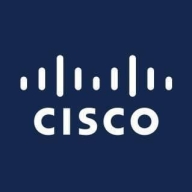

Fortinet FortiPortal and Cisco Security Cloud Control compete in the network security management domain. Fortinet FortiPortal has an edge in pricing and support, while Cisco Security Cloud Control is preferred for its comprehensive capabilities.
Features: Fortinet FortiPortal offers intuitive security management with seamless integration into Fortinet's hardware, ensuring end-to-end visibility and control. Key features include application control, an intuitive user interface, and easy-to-use reporting tools. Cisco Security Cloud Control provides advanced threat intelligence, dynamic network security policy enforcement, and an extensive range of device support, including centralized upgrades for ASAs and role-based access controls.
Room for Improvement: Fortinet FortiPortal may benefit from enhanced threat intelligence features, more robust policy enforcement capabilities, and increased device support. Cisco Security Cloud Control could improve user interface intuitiveness, simplify multi-device management, and streamline initial setup processes to reduce complexity for first-time users.
Ease of Deployment and Customer Service: Fortinet FortiPortal is praised for straightforward deployment and responsive customer support, ensuring quick network integration. Cisco Security Cloud Control requires more initial setup effort due to its comprehensive features but offers extensive documentation and a robust support system that guides users through deployment complexities.
Pricing and ROI: Fortinet FortiPortal is known for lower setup costs, making it attractive for companies seeking cost-effective solutions with good ROI. Cisco Security Cloud Control requires more significant financial input initially but delivers considerable value through its extensive features, potentially leading to a positive ROI over time.
| Product | Market Share (%) |
|---|---|
| Fortinet FortiPortal | 1.0% |
| Cisco Security Cloud Control | 1.5% |
| Other | 97.5% |


| Company Size | Count |
|---|---|
| Small Business | 6 |
| Midsize Enterprise | 3 |
| Large Enterprise | 6 |
| Company Size | Count |
|---|---|
| Small Business | 8 |
| Midsize Enterprise | 4 |
Cisco Security Cloud Control offers centralized management, real-time visibility, and AI-driven automation for on-premises and cloud environments, simplifying scalability and deployment.
With a unified approach, Cisco Security Cloud Control enhances security posture by providing cross-platform insights across Cisco's ecosystem. It accelerates threat detection and optimizes policy enforcement through a blend of AI automation and natural language querying capabilities. The intuitive platform serves multiple devices, enabling comprehensive management of Secure Firewall, Secure Access, and other services with guidance from the Cisco AI Assistant. It also includes an AI Operations feature that identifies critical issues and provides real-time insights, enhancing response times while a policy analyzer improves security hygiene by detecting and closing security gaps. Its automation minimizes manual tasks, secures cloud-stored configurations, and supports two-factor authentication. However, it could benefit from improvements in navigation clarity, bulk change handling, and expanded third-party integrations.
What are the key features of Cisco Security Cloud Control?Industries implementing Cisco Security Cloud Control leverage its capabilities for tasks ranging from firewall management to intrusion prevention. Enterprises use it to streamline policy management, automate configurations, and integrate Cisco devices with cloud strategies, benefiting from simplified security orchestration and network segmentation.
FortiPortal gives MSPs a comprehensive set of hosted Wi-Fi and security management features for FortiGate, FortiWiFi, and FortiAP products. With multitenancy, you can securely manage your customers through a centralized management console. This lets you respond quickly to customer requests and easily monitor customer networks. Our virtual appliance can be deployed on a hosted services infrastructure, allowing you to build highly-customized private-cloud services for customers.
We monitor all Firewall Security Management reviews to prevent fraudulent reviews and keep review quality high. We do not post reviews by company employees or direct competitors. We validate each review for authenticity via cross-reference with LinkedIn, and personal follow-up with the reviewer when necessary.